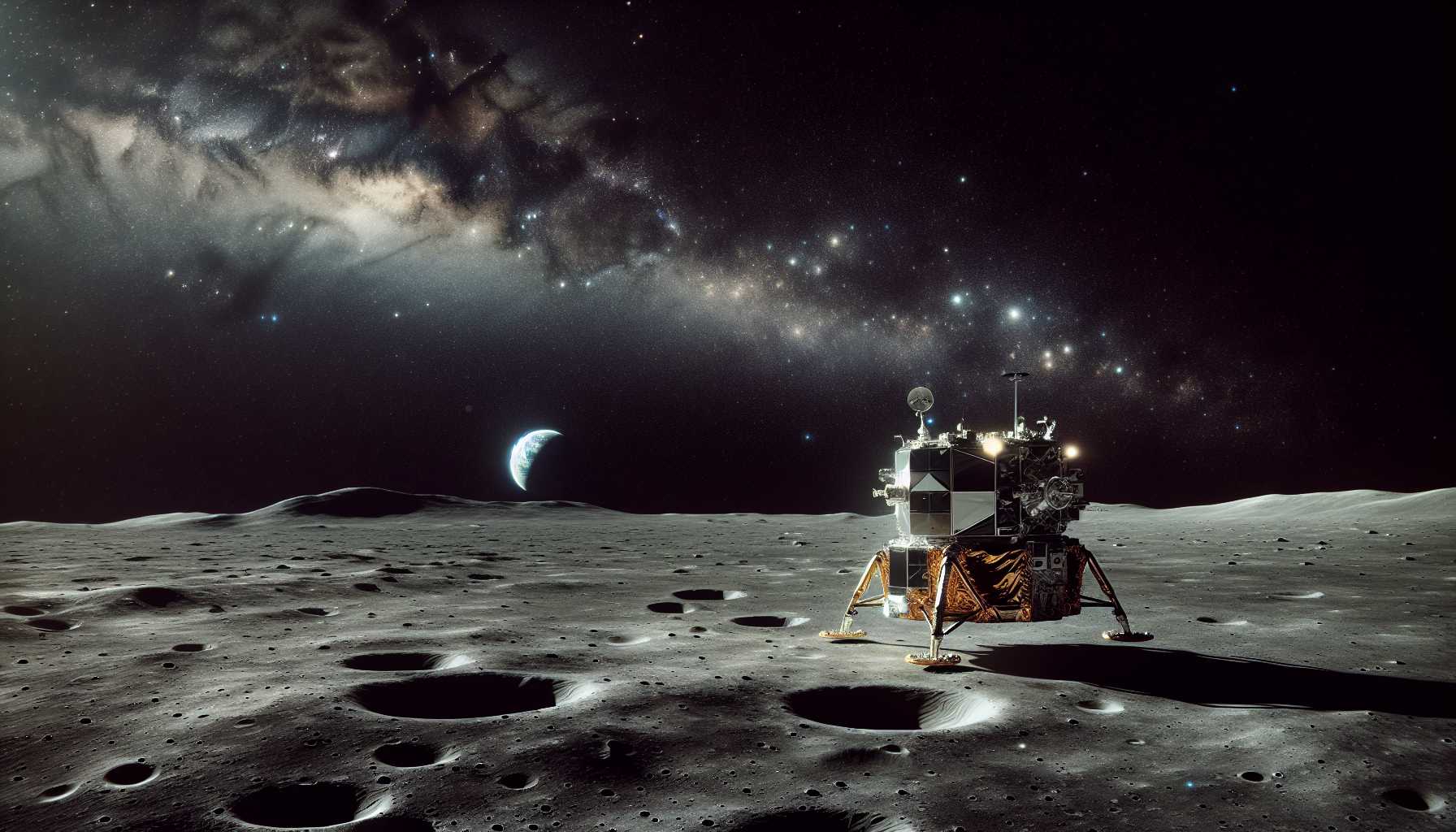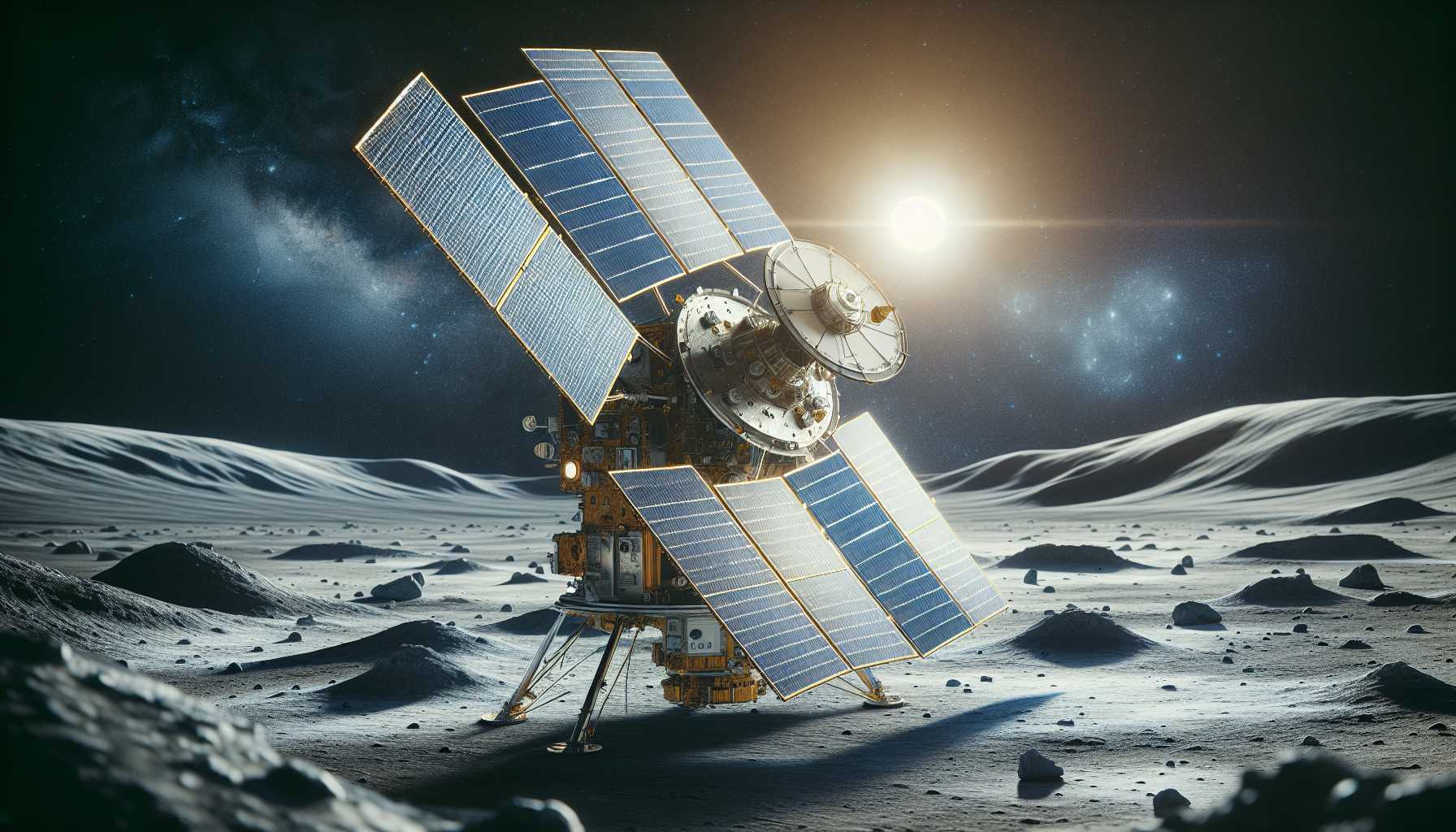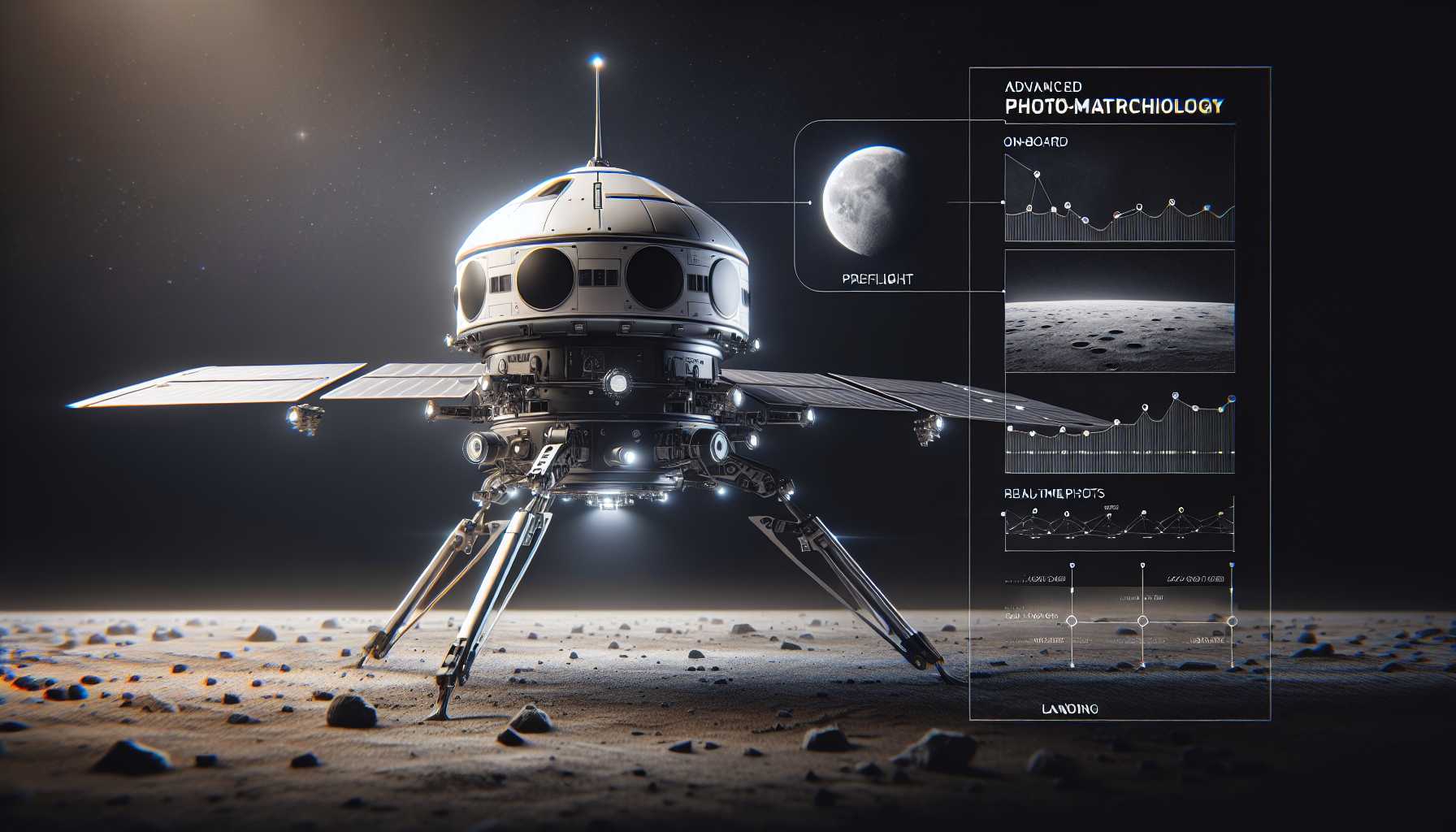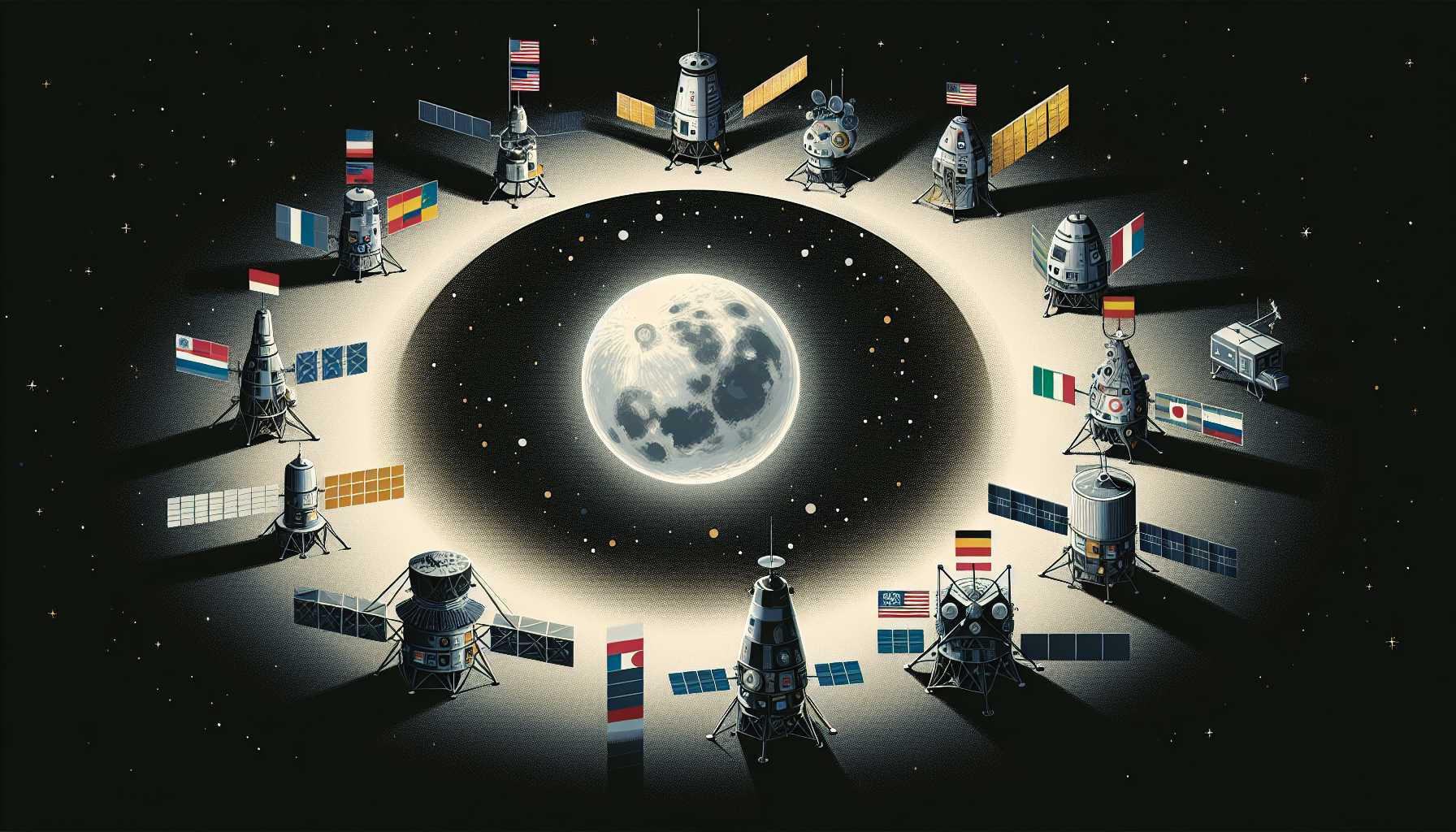Japan takes a giant leap, becoming the fifth nation to achieve a lunar touchdown with its SLIM lander. But will the celestial body’s mundane weather spell a premature end to this cosmic explorer’s mission? Let’s dive into the tale of technological triumphs, near misses, and the relentless pursuit of space knowledge.
Japan’s Robotic Moonshot: A Nail-Biting Touchdown
 In the vast, silent expanse of space, Japan has etched its name into the annals of lunar exploration history. The Japan Aerospace Exploration Agency (JAXA) has announced its Smart Lander for Investigating the Moon (SLIM) has gracefully survived the descent onto our celestial neighbor’s surface—a monumental moment that occurred at 12:20 a.m. on January 20. Yet, the twist in this lunar saga is the lander’s dying battery. JAXA’s jubilation is tethered to the hope that their robotic emissary’s solar panels harness enough sunrays to kick-start operations. Consider this a space thriller where our protagonist awaits the sunrise for survival.
In the vast, silent expanse of space, Japan has etched its name into the annals of lunar exploration history. The Japan Aerospace Exploration Agency (JAXA) has announced its Smart Lander for Investigating the Moon (SLIM) has gracefully survived the descent onto our celestial neighbor’s surface—a monumental moment that occurred at 12:20 a.m. on January 20. Yet, the twist in this lunar saga is the lander’s dying battery. JAXA’s jubilation is tethered to the hope that their robotic emissary’s solar panels harness enough sunrays to kick-start operations. Consider this a space thriller where our protagonist awaits the sunrise for survival.
Solar Panels: The Dicey Game of Angle and Light
 Picture this: your phone’s on 1%, the charger’s across the room, and you’re expecting a call that could change your life. That’s SLIM right now, but on a cosmic scale, we’re talking about a lander on the Moon running low on juice! In a race against time, JAXA’s space wizards are betting on the sun’s capricious whims. If SLIM’s panels catch the solar spotlight just right, they’ll breathe life back into the mission. It’s a stellar gambit relying on the celestial dance between the Moon and its fiery star.
Picture this: your phone’s on 1%, the charger’s across the room, and you’re expecting a call that could change your life. That’s SLIM right now, but on a cosmic scale, we’re talking about a lander on the Moon running low on juice! In a race against time, JAXA’s space wizards are betting on the sun’s capricious whims. If SLIM’s panels catch the solar spotlight just right, they’ll breathe life back into the mission. It’s a stellar gambit relying on the celestial dance between the Moon and its fiery star.
The Cradle of Humanity’s Celestial Sibling
 SLIM’s resting place—the slopes of Shioli Crater—holds clues to the Moon’s mysterious birth. The domination of Earth rock on the lunar mantle flaunts theories that our satellite sibling’s creation involved an Earth-shattering kaboom—namely, a colossal celestial collision. JAXA thirsts for answers. SLIM’s touchdown spot could spit out secrets of our planetary origins, with lunar mantle samples potentially strewn near the crater’s surface, ripe for probing.
SLIM’s resting place—the slopes of Shioli Crater—holds clues to the Moon’s mysterious birth. The domination of Earth rock on the lunar mantle flaunts theories that our satellite sibling’s creation involved an Earth-shattering kaboom—namely, a colossal celestial collision. JAXA thirsts for answers. SLIM’s touchdown spot could spit out secrets of our planetary origins, with lunar mantle samples potentially strewn near the crater’s surface, ripe for probing.
Precision Beyond Parallels
 Aiming for a “pinpoint landing,” SLIM targets under 100 yards of landing accuracy, dwarfing the vague square-mile aspirations of yesteryears. This technological marvel was equipped with photo-matching tech—think of a cosmic Google Maps pin drop within a football field’s distance—ushering an unprecedented era of bullseye landings on the lunar surface.
Aiming for a “pinpoint landing,” SLIM targets under 100 yards of landing accuracy, dwarfing the vague square-mile aspirations of yesteryears. This technological marvel was equipped with photo-matching tech—think of a cosmic Google Maps pin drop within a football field’s distance—ushering an unprecedented era of bullseye landings on the lunar surface.
A Bittersweet Space Symphony: Triumphs and Trials
 As SLIM celebrates its lunar pirouette, somewhere across the space-time continuum, Astrobotic Technologies’ Peregrine lander bowled out of the cosmic game with a tragic fuel leak, disintegrating over the south Pacific Ocean. Two landers, two destinies—one gloriously perched on lunar soil, while the other collapsed back into Earth’s aquatic arms. NASA’s bet on Astrobotic for the Commercial Lunar Payload Services initiative reflects the dichotomy of space exploration—the thin line between grandeur and calamity. The Peregrine’s stumble hasn’t dampened spirits, though. If anything, it fuels the fire of human resilience and our cosmic curiosity.
As SLIM celebrates its lunar pirouette, somewhere across the space-time continuum, Astrobotic Technologies’ Peregrine lander bowled out of the cosmic game with a tragic fuel leak, disintegrating over the south Pacific Ocean. Two landers, two destinies—one gloriously perched on lunar soil, while the other collapsed back into Earth’s aquatic arms. NASA’s bet on Astrobotic for the Commercial Lunar Payload Services initiative reflects the dichotomy of space exploration—the thin line between grandeur and calamity. The Peregrine’s stumble hasn’t dampened spirits, though. If anything, it fuels the fire of human resilience and our cosmic curiosity.
Exploration: A Revived Global Obsession
 Contrary to the space ennui post-Apollo, the Artemis campaign has rekindled a worldwide fervor for Moon missions. Beyond national pride, this lunar resurgence aims for the practical; the South Pole’s ice beckons for its promise of water, oxygen, and even rocket fuel—invaluable resources for the sustainable exploration of our final frontier. India’s Chandrayaan-3 rover, alongside endeavors from the USSR, the US, and China, comprises a pantheon of pioneers paving our path to the Moon. The stakes are high, but the potential dividends for humanity’s future could be stellar.
Contrary to the space ennui post-Apollo, the Artemis campaign has rekindled a worldwide fervor for Moon missions. Beyond national pride, this lunar resurgence aims for the practical; the South Pole’s ice beckons for its promise of water, oxygen, and even rocket fuel—invaluable resources for the sustainable exploration of our final frontier. India’s Chandrayaan-3 rover, alongside endeavors from the USSR, the US, and China, comprises a pantheon of pioneers paving our path to the Moon. The stakes are high, but the potential dividends for humanity’s future could be stellar.
Private Sector’s Moonshot: Innovation or Hubris?
 Many eyes are on the likes of Astrobotic and other brash entrants keen on branding their trails on the moon dust. This cadre of cosmic startups, in lieu of colossal crashes, spurs a philosophical quandary—is the private sector’s reach exceeding its grasp? But herein lies the paradox of progress: each failed orbit, each shattered craft, is a stepping stone in the vast vacuum towards ultimate success. Our endeavor to escape Earth’s cradle is laced with trials, each a lesson inscribed in the annals of spacefaring knowledge.
Many eyes are on the likes of Astrobotic and other brash entrants keen on branding their trails on the moon dust. This cadre of cosmic startups, in lieu of colossal crashes, spurs a philosophical quandary—is the private sector’s reach exceeding its grasp? But herein lies the paradox of progress: each failed orbit, each shattered craft, is a stepping stone in the vast vacuum towards ultimate success. Our endeavor to escape Earth’s cradle is laced with trials, each a lesson inscribed in the annals of spacefaring knowledge.
Final Thoughts
As we peer into the inky abyss, the symphony of celestial exploration continues unabated. The SLIM lander’s conquest and its fragile solar reliance reflect the delicate balance between our cosmic ambitions and nature’s immutable laws. Whether in the tranquil highlands of our Moon or amidst the restless sea of innovation, our journey through space is a tale of human spirit, our boundless curiosity, and the unyielding quest for knowledge. Stay starry-eyed, fellow astrophiles, for the dance with the stars has just begun.







